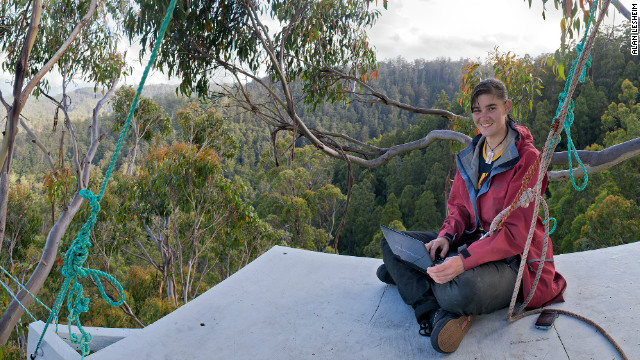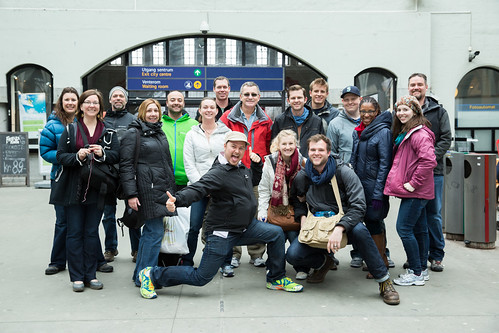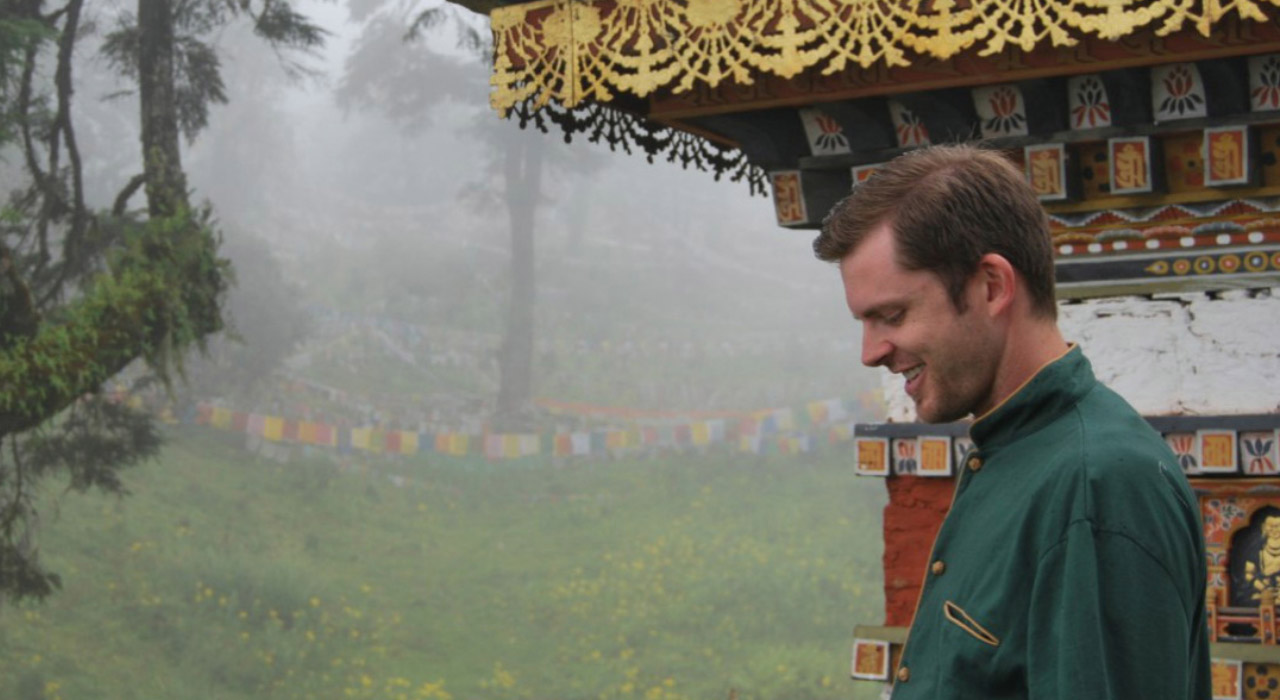8 Lessons Learned from Visiting Every Country in the World
One of the most popular posts on this blog is my 29 life lessons learned in travelling the world (for 8 years straight). I've personally been to a couple of dozen countries, but then there are people like my friend Chris Guillebeau. He has been to every single country on earth!
I've met Chris on multiple occasions – in Thailand as my blog was just starting off, in his hometown of Portland for a coffee and his fun “World Domination Summit”, and then in Norway for his “end of the world party”, since he was celebrating having visited every nation.
Apart from writing two New York times best-sellers (both of which he was kind enough to mention me in!) he is a kind and wise person, so I am honoured to have him share his thoughts with you on the blog today. Over to you Chris!
Benny Lewis and I stood by the train tracks in Oslo, Norway, waiting to head out to visit Bergen. Both of us were experienced travelers, with Benny having visited dozens of countries and learning so many languages along the way.
Norway was a beautiful country, but for me it was something extra special: the final frontier. Over the previous decade, I’d followed a quest. The quest was to visit every country in the world—all 193 U.N. member states, with no exceptions.
I wanted to challenge myself…. and I’d done it! Victory came in the form of a $20 cheese sandwich (Norway is expensive) and a party with 200 of my closest friends.
After saying farewell and heading homeward, I eventually wrote a book that debuts around the world this month—but fortunately, the book isn’t just about my journey. The book is about quests in general. It’s about pursuing a big dream and being willing to risk it all.
So what did I learn along the way? Here’s a sneak peek into some of those lessons…
1. Unhappiness can lead to new beginnings
If you’re not happy with your life, or even if you feel a faint stirring to do something different, pay attention to the dissatisfaction. Ask yourself “What if” questions. What if I actually pursued that dream or idea? What if I made that big change? Discontent can be a source of growth and inspiration.
For best results, though, you’ll need to follow the discontent with specific action. Many of the people I met found a way to combine discontent with inspiration to create a quest: a world journey, a lifelong pursuit, or other big project.
- Instead of taking on “the job of his dreams,” a young university graduate from England named Tom Allen decided to cycle the world. Along the way he met the love of his life and established a new career (so much for the job of his dreams)
- When laid off from a long-term job at General Motors, Sandi Wheaton chose not to rush into another. She first traveled on America’s Route 66, documenting the adventure at every stop
By the way, discontent doesn’t necessarily mean you’re miserable. In many cases, it just means that you’re looking for something more in your life. Don’t ignore these feelings!
2. Not everyone needs to believe in your dream, but you do
Pay attention to the things that excite you and the things that bother you. In the book I wrote about Jiro Ono, the sushi chef from Tokyo who’s gained international fame for being extremely precise about the food he prepares. One of my favorite quotes was when he said he felt “victorious” over a particularly nice tuna.

I also met Miranda Gibson, who lived in the treetops of Tasmania for more than a year in protest of illegal logging. Miranda didn’t want to just start a letter-writing campaign or even march in the streets. She took dramatic action, and saved a whole forest.
When you set out to pursue a big dream, will your friends and family be there for you? Chances are that some will and others won’t. It doesn’t matter what anyone else thinks about your quest, but if you don’t have sufficient motivation to see it through, it will be tough going. You must believe!
3. Before beginning a quest, count the cost
In the early days of my journey to every country, someone criticized it by saying all it required was a certain amount of time and money. I later realized that this perspective could actually be helpful. If I clearly understood exactly what was involved in “going everywhere,” and if I then began working on each part of the goal step-by-step, it no longer seemed overwhelming.
Costs include:
- Money
- Time
- Energy & Attention
- Other intangibles
In my case, the first half of the quest—the first 100 countries—cost me less than $30,000 USD. Just $30k! I don’t mean to suggest that $30,000 is a very small amount of money. But as an American, I often saw my friends investing that much money in a single year of graduate school education, or in some cases a car. For me, the legion of experiences I had in visiting 100 countries was well worth this expense, especially when paid out over time.
Whatever you choose to do, count the cost as much as you can.
4. Most of us are motivated by progress and achievement. Keep moving forward!
In the classic tale of adventure, Odysseus fought off sea monsters and escaped from an island prison—but he also endured a lot of boring days at sea. Most quests consist of a set of milestones that take a long time to reach. To stay on track, choose forward motion—keep making choices that bring you closer to the goal, even if it seems like reaching the end will take forever.

I talked with Nate Damm, who walked across America. When I asked how he did it, he said it was simple: all he had to do was put one foot in front of the other. I thought about Nate’s “simple” lesson many times as I finished my own quest. All he had to do was walk, and all I had to do was keep visiting countries. As long as I made continual, logical progress toward the goal, I knew I’d eventually make it to country #193 of 193.
5. Effort can be its own reward if you let it
If you measure success by the opinions of others, you’ve effectively set yourself up for failure. But if you measure success by your own effort, focusing on what you produce and contribute, any additional praise or fame will be a bonus. The work itself can serve as its own motivation.
I was fascinated to learn that successful standup comics Jay Leno and Jerry Seinfeld continue to have an obsession with practicing their sets in small clubs far removed from big cities. Each are focused on the effort, the process of perfecting a routine and remaining in top form even after they’ve achieved a tremendous amount of success.
6. Some adventures should be shared
Beginning from his home in England and continuing south through Sudan, Tom Allen had said farewell to the job opportunity and set out to cycle the world. When he fell in love and had to make a tough choice, he said that “a dream can have only one owner.”
But some challenges can be conquered jointly, and even if your quest isn’t a tag-team effort, chances are that a number of people will participate in your dream as you move toward completion.
7. Misadventures produce confidence
Getting stuck, detained, shut out, or set back is never fun, but these experiences are a necessary part of the journey. When something goes wrong, strive to accept it as an investment in learning. Hopefully, you won’t make the same mistake twice… or at least, not over and over.
In my case, I damaged a rental car in Italy, was deported from Eritrea in the middle of the night, missed the only flight off a small island, and generally lost or forgot things all along the way. But the more mistakes I made, the more confident I became as I realized that most things would be okay and the worst-case scenario wasn’t all that bad.
8. As you make progress toward a small goal, the bigger vision expands
Many people featured in the book started with a small goal that grew in scope as it became more feasible. If you can’t picture a tremendous accomplishment at first, start with an achievable one.
- 100 countries led to every country in the world
- 100 knitted hats led to 10,000 (note: this quest is still in progress)
- An initial goal of shooting 500,000 photos led Thomas Hawk on a quest to shoot, process, and edit one million photos
- A love of classical music led Gary Thorpe, an Australian DJ, to produce the world’s largest symphony with more than 800 performers
- An obsession with birds led Phoebe Snetsinger to see (and document!) more specifies that anyone else in history
Conversely, when you work toward a tremendous accomplishment, watch out: the next one may be even bigger. Quests have a habit of growing in scale and scope.
Back In Norway

When I reached the End of the World, Benny and I had a party to celebrate. I grabbed a vodka-soda from the bar as Benny had a soda-soda, and we celebrated with 200 awesome people who had also made the trek to Oslo.
A lot of things had changed since I first began the journey. The quest gave me confidence and a bigger vision for my life. I’d started as a solitary traveler, but ended surrounded by friends.
Oh, one more thing, in case it hasn’t been clear from the above post: the main purpose of the book (and this post!) is to communicate a message that extends beyond a collection of stories. That message is that a quest can bring purpose and meaning to your life.
If you’re discontented, or even if you’re happy but you want more from life, maybe it’s time to pursue a quest of your own.
Big thanks to Benny for having me here on Fi3M. I’m a huge fan! Thanks to all of you for reading as well. 🙂



Social